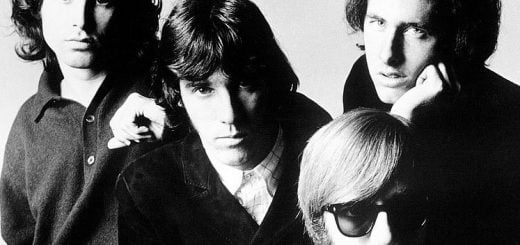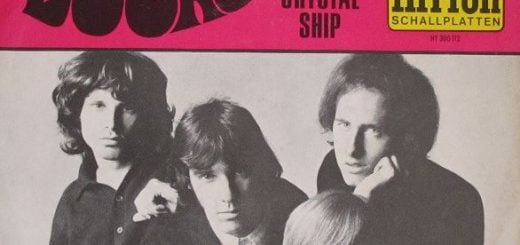Queen of the Highway by The Doors Lyrics Meaning – Unraveling the Tapestry of American Lore
Lyrics
Queen of the highway
Sign on the road said
Take us to madre
No one could save her
Save the blind tiger
He was a monster
Black, dressed in leather
She was a princess
Queen of the highway
Now they are wedded
She is a good girl
Naked as children
Out in the meadow
Naked as children
Wild as can be
Soon to have offspring
Start it all over
Start it all over
American boy, American girl
Most beautiful people in the world
Son of frontier, Indian Swirl
Dancing through the midnight whirlpool
Formless
Hope it can continue a little while longer, come one
Within the enigmatic soundscape of The Doors’ discography lies a gem that is often overlooked yet rife with subtextual richness—’Queen of the Highway.’ Released on their 1970 album ‘Morrison Hotel,’ this track maneuvers deftly through a mélange of poetic vignettes and allegorical imagery.
Painted against a canvas of the open road, ‘Queen of the Highway’ serves as a gateway to the exploration of identity, the embrace of countercultural values, and the deconstruction of archetypical roles within American society. Delving into the heart of the song reveals a layered narrative that extends beyond the literal journey of its protagonists.
The Royal Road Trip: A Love Story or a Parable?
At first glance, ‘Queen of the Highway’ captures the rebellious spirit of a love story set on the asphalt veins of the American landscape. The princess and her blind tiger—an outlaw couple clad in leather and audacity—drive with abandon, casting societal expectations to the wind. The marriage of these figures suggests a union of polarities, symbolizing the marriage of ideals in a time of cultural upheaval.
But the narrative is more parable than road trip. Through the lens of Morrison’s lyrical potency, the queen and her consort become archetypes in a modern American mythology, battling against conformism with their untamed love. The open highway is their canvas, with each ‘sign on the road’ pointing not just towards ‘madre,’ or mother, but towards the genesis of their own mythical landscape.
Naked as Children: Innocence, Freedom, or Nihilism?
Morrison’s invocation of nakedness—’Naked as children / Out in the meadow’—is emblematic of a return to innocence, a shedding of the artifice that defines so much of societal structure. This idea parallels the ‘back to the land’ movement prevalent during the late 60s and early 70s, emphasizing a desire to return to simplicity and essential human experience.
Yet, is this innocence or a deliberate embrace of primal freedom, a metaphor for the liberation from the constructs of civilization? Or perhaps it is a slide into nihilism, a surrender to the existential void that threatens at the edges of the counterculture’s idealism? The ambiguity Morrison threads into these lyrics leaves the song oscillating between hope and despair.
Unraveling the Metaphor of Cross-Cultural Identities
In one of the most evocative lines of ‘Queen of the Highway,’ Morrison sings of the ‘Son of frontier, Indian Swirl, dancing through the midnight whirlpool,’ conjuring images of a hybrid America, where the old frontier and the native histories swirl into the present. This line challenges the listener to parse out the complexity of American identity that is at once beautiful and turbulent.
The metaphor presents a fusion of cultures, an acknowledgment of the multifaceted nature of American roots. The Doors paint a picture of a nation whose ‘most beautiful people’ are the product of a blending and clashing of frontiers and traditions, encapsulating the persistent dance of progress and retrospection.
The Symbolic Significance Behind the ‘Blind Tiger’
The Doors give listeners a cryptic character in the form of the ‘blind tiger,’ leaving room for interpretation. As the protector of the queen, the blind tiger represents a force of nature, powerful, fierce, yet unseeing. This paradoxical creature embodies the contrast between knowledge and instinct, vision and blindness—themes reflective of the ‘see-no-evil’ stance of the era’s mainstream ethos.
Could it be that the ‘blind tiger’ is a ‘monster’ by the standards of a society he cannot see, or is he a monster for not conforming to its expectations? Herein lies the subtextual examination of rebellion, of the countercultural movement’s push against a blind society that, itself, could not save the queen from a numbing fate.
Memorable Lines and Their Echoes in Modernity
The ritualistic repetition of ‘Start it all over’ resonates far beyond its initial recitation. The Doors’ invocation serves as both a command and a plea to perpetually renew the spirit of revolution, to chase ephemeral freedom along the highways of life and consequence.
In our present day, the echoes of ‘Queen of the Highway’ are palpable as new generations grapple with similar themes of identity, independence, and societal critique. Morrison’s lyrical timelessness speaks to the cyclical nature of cultural movements, emphasizing that, perhaps, the journey on the highway is eternal, with the queen and her tiger perpetually seeking the horizon.








